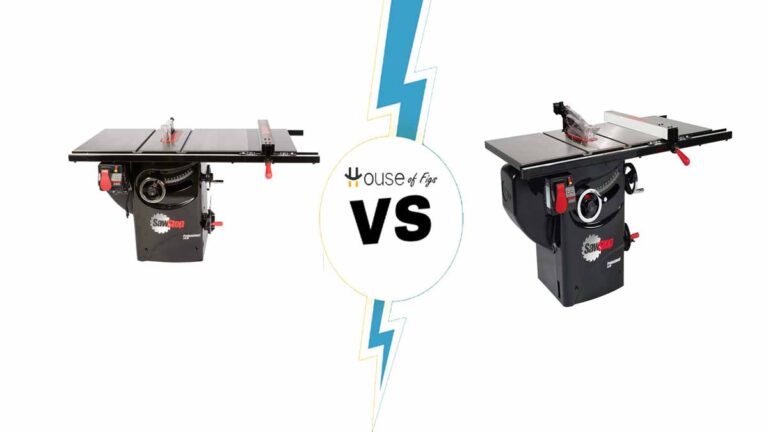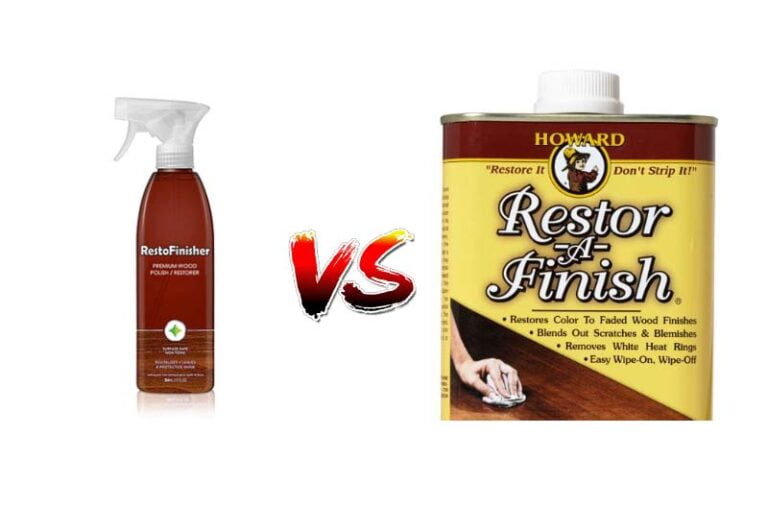Aliphatic Glue Vs. PVA – Choosing the Perfect Adhesive
When it comes to woodworking or crafting, selecting the right adhesive is crucial for a successful project. Among the myriad of adhesives available, Aliphatic Resin Glue and Polyvinyl Acetate (PVA) are prominent choices. But what sets them apart?
Aliphatic Glue Vs. PVA: Quick Comparison
| Feature | Aliphatic Resin Glue | Polyvinyl Acetate (PVA) |
|---|---|---|
| Drying Time | Faster | Slower |
| Bond Strength | Stronger | Moderate |
| Water Resistance | Superior | Moderate |
| Cost | Higher | Lower |
| Food Safe | No | Yes |
What Are The Key Differences Between Aliphatic Glue And PVA?
Explore Bonding Strength
A foremost difference lies in the bond strength. Aliphatic glue is known for creating a stronger bond compared to PVA glue. This attribute makes it a go-to choice for woodworking projects where strength is a priority.
Discover Drying Time
Another notable distinction is the drying time. Aliphatic glue generally dries faster than PVA. The quicker drying time is often advantageous in a professional setting, speeding up the project completion rate.
Uncover Water Resistance
Water resistance is a significant factor when choosing an adhesive. Here, aliphatic glue steals the show with superior water resistance, making it suitable for outdoor furniture and other exterior projects. On the other hand, PVA, with moderate water resistance, finds its use in indoor projects.
Delve into Cost
Cost is often a deciding factor in choosing between these two adhesives. PVA is a more budget-friendly option compared to aliphatic glue. This cost effectiveness makes PVA a popular choice among hobbyists and DIY enthusiasts.
Food Safety Matters
For projects that come in contact with food, PVA is the safer bet as it’s food safe once cured, unlike aliphatic glue. This is essential to know for those crafting cutting boards or other kitchen utensils.
Understand Suitability
Aliphatic glue’s robust bond and water resistance make it a suitable choice for woodworking professionals or serious hobbyists tackling demanding projects. PVA, being easier on the pocket and food safe, is more fitting for light-duty indoor projects and crafts.
Engage with Environmental Impact
Considering the environmental impact, PVA glue is a better option as it is low in volatile organic compounds (VOCs). Aliphatic glue, being a petroleum-based adhesive, presents more environmental concerns due to higher VOC content.
Explore Ease of Use
Both glues are user-friendly, but PVA is often preferred by beginners due to its longer drying time, allowing for adjustments before the bond is set. Aliphatic glue, with its quicker set time, might not offer this luxury.
Key Takeaways
- Bond Strength: Aliphatic glue provides a stronger bond, making it preferable for demanding woodworking projects.
- Drying Time: The quicker drying time of aliphatic glue is a boon for professionals, while the slower drying time of PVA is beginner-friendly.
- Water Resistance: Superior water resistance makes aliphatic glue a winner for outdoor projects.
- Cost: PVA glue is a cost-effective, reliable choice for less demanding, indoor projects.
- Food Safety: PVA glue is food safe once cured, making it suitable for crafting kitchenware.
- Environmental Impact: PVA glue, with lower VOC content, is a more environmentally friendly option.
Pros and Cons
Understanding the benefits and drawbacks of both Aliphatic Glue and Polyvinyl Acetate (PVA) can help you make an informed decision for your specific project needs. Below is a comprehensive analysis of both adhesives, comparing their pros and cons.
Pros of Aliphatic Glue
- Strong Bonding Capacity: Aliphatic glue forms a very strong bond, making it ideal for woodworking projects that require a sturdy hold.
- Faster Drying Time: The drying time is relatively short, which is an advantage in a professional or time-sensitive setting.
- Superior Water Resistance: With a better resistance to water, it is suitable for outdoor projects or places with high humidity.
- Sandable and Paintable: Once dried, aliphatic glue can be sanded and painted over, making the finishing process smoother.
Cons of Aliphatic Glue
- Higher Cost: The cost of aliphatic glue is on the higher side when compared to PVA.
- Not Food Safe: It’s not recommended for projects that will come into contact with food.
- Higher VOC Content: Being petroleum-based, it contains higher volatile organic compounds which may be concerning from an environmental standpoint.
Pros of PVA
- Cost-effective: PVA glue is a budget-friendly choice, making it a favorite among hobbyists and DIY enthusiasts.
- Food Safe: Once cured, it’s safe for indirect food contact which is great for crafting kitchenware.
- Easy to Work With: The longer drying time gives you the flexibility to adjust before the bond sets.
- Lower VOC Content: PVA has lower volatile organic compounds, making it a more eco-friendly option.
Cons of PVA
- Moderate Bond Strength: The bond strength is moderate, which might not be suitable for more demanding projects.
- Longer Drying Time: The longer drying time can be a drawback if you’re working on a time-sensitive project.
- Not Ideal for Exterior Use: It’s less water-resistant making it not an ideal choice for outdoor use.
Aliphatic Glue or PVA – Which Should You Choose?
The decision between Aliphatic Glue and PVA boils down to the specific requirements of your project.
- If you’re working on a woodworking project that demands a strong bond, and possibly will be placed outdoors, aliphatic glue is the likely choice. Its strong bonding capacity and superior water resistance ensure durability and longevity, despite the higher cost.
- On the flip side, if you’re engaging in light indoor crafting or woodworking projects, PVA could be your go-to. It’s budget-friendly, easy to work with, and safer for indirect food contact.
- Moreover, if environmental concerns are a significant factor for you, PVA’s lower VOC content makes it a more appealing choice.
- Lastly, for projects that will be painted or finished, the ability to easily sand and paint over aliphatic glue might sway you in its direction.
Making the right choice between Aliphatic Glue and PVA can significantly affect the outcome of your project. Being informed about the pros and cons of each can lead you towards a more successful, cost-effective, and safe project completion. Whether you opt for the robust bonding of Aliphatic or the user-friendly and economical PVA, understanding their distinctive advantages and limitations is key to meeting your project’s demands.
Related FAQs
What is the price difference between Aliphatic Glue and PVA?
Aliphatic glue tends to be more expensive compared to PVA due to its superior bonding strength and water resistance. PVA is a more budget-friendly option, making it a popular choice among hobbyists and DIY enthusiasts.
Which glue is better for wood, Aliphatic Glue or PVA?
Aliphatic glue is often preferred for woodworking projects due to its strong bonding capacity and superior water resistance, especially for outdoor furniture or projects. However, PVA is also a good choice for indoor woodworking projects, especially when cost is a consideration.
How do Aliphatic Glue, PVA, and Epoxy compare?
Aliphatic glue offers strong bonds and fast drying times, ideal for woodworking projects. PVA is cost-effective, eco-friendly, and food-safe, suitable for lighter, indoor tasks. Epoxy, on the other hand, provides an extremely strong bond and is resistant to water, chemicals, and heat, making it ideal for a wide range of heavy-duty applications.
What glue is stronger than PVA?
Aliphatic glue and epoxy are both stronger than PVA. The choice between them depends on the project requirements such as water resistance, drying time, and surface compatibility.
What distinguishes PVA glue from other normal glues?
PVA glue is known for its flexibility, ease of use, and being non-toxic, making it a safe choice for various crafts and indoor woodworking projects. Unlike some other glues, it’s also water-soluble and can be cleaned with water before it sets.
What is the best use for PVA glue?
PVA glue is best used for crafting, light woodworking, paper bonding, and where food-safety is a consideration, as it’s non-toxic and safe once cured.
Why is PVA glue considered strong?
PVA glue is considered strong enough for light to medium bonding tasks due to its ability to adhere well to various surfaces, creating a durable bond.
What are the types of PVA glue and their advantages and disadvantages?
The three types of PVA glue are white craft glue, yellow carpenter’s glue, and waterproof PVA glue. White craft glue is great for crafting, but not very water-resistant. Yellow carpenter’s glue is stronger and ideal for woodworking, but also not highly water-resistant. Waterproof PVA glue is water-resistant, making it suitable for outdoor projects but may come at a higher cost.
What is another name for PVA glue?
Another common name for PVA glue is white glue or carpenter’s glue.
Is PVA also referred to as alcohol glue?
No, PVA is not referred to as alcohol glue. They are distinct in their composition and usage.
What chemicals are present in PVA glue?
PVA glue primarily consists of polyvinyl acetate polymer emulsified in water. It may also contain small amounts of other substances to improve its adhesion and drying time.
What are the properties of PVA glue?
The properties of PVA glue include water-solubility, flexibility, ease of use, good adhesion, non-toxicity, and being clear drying.
What is Aliphatic glue?
Aliphatic glue is a type of adhesive derived from aliphatic compounds that is known for its strong bonding, fast drying, and water-resistant properties, making it ideal for woodworking projects.
What happens when PVA glue dries?
When PVA glue dries, the water in the formula evaporates, leaving behind a flexible yet sturdy bond between the materials it has adhered to.
What is Aliphatic PVA?
There isn’t a common adhesive known as Aliphatic PVA. Aliphatic glue and PVA glue are distinct types of adhesives with different properties and uses, as discussed earlier.
Conclusion
Choosing between Aliphatic Glue and PVA largely depends on the specifics of your project. If a robust bond, water resistance, and a quick drying time are your primary concerns, aliphatic glue stands out. Conversely, for budget-friendly, eco-conscious, and food-safe adhesive solutions, PVA holds its ground. Both adhesives have their unique set of advantages that cater to different project needs, making them indispensable options in the realm of adhesives.


